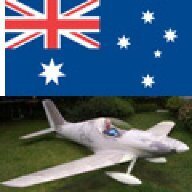I had been digging through old youtube clips of the Convair Pogo, and got to thinking the amount of power required for vertical lift, if converted fully to thrust by becoming wing-born, should come back with a fairly high speed (as with the Pogo)
Although I never did any structural layouts, I did a lot of thinking on the control layout and modes of flight.
Basic structure was a large glass/epoxy covered polystyrene delta, powered by a Rotax 503 driving contra-rotating lift blades, that employed 'floating, self pitching blades', all sitting atop a universal mount with a T bar control arm with throttle grip and a brake lever used to de-pitch the blades for power-up/decent/auto-rotation.
The T bar could be twisted like a pushbike handlebar, and was connected to the ailerons (elevons actually) giving roll in normal (horizontal) flight, or yawing motion when hovering.
The T bar was moved laterally, and for and aft (similar to a hang glider A frame) which while hovering gave translation control and in level flight would couple to the elevons for pitch and roll as described above.
Sidewards movement of the T bar in level flight would give yaw control, but not really needed and would possibly be locked out until hovering again.
Some people would take a bit of getting used to being strapped up what would be 'underneath' while in level flight, but most hang glider pilots would take to it.
Cant find any of my drawings just now, but did make a little animation some years back, but only have one frame.
This is very rough, but gives the idea...
Flying techniques needed a bit more study, but hovering would be fairly intuitive, level flight is fairly straight forward, but decent and transition to hover would be a bit 'trick'
There are a few choices with engine failures, all dependant on height, usually ending up under a ballistic chute.
Don't know how it would be registered and dare say no-one would want to be first to accept it...






